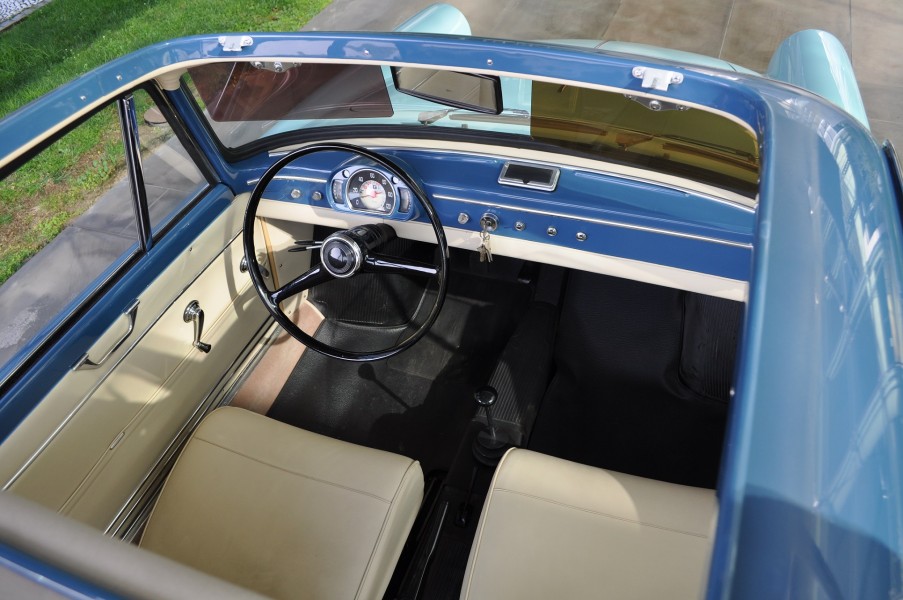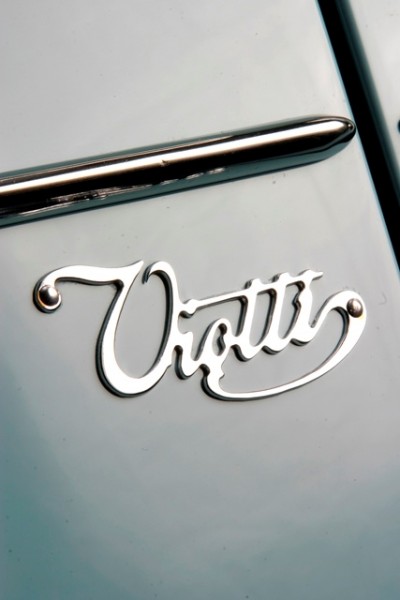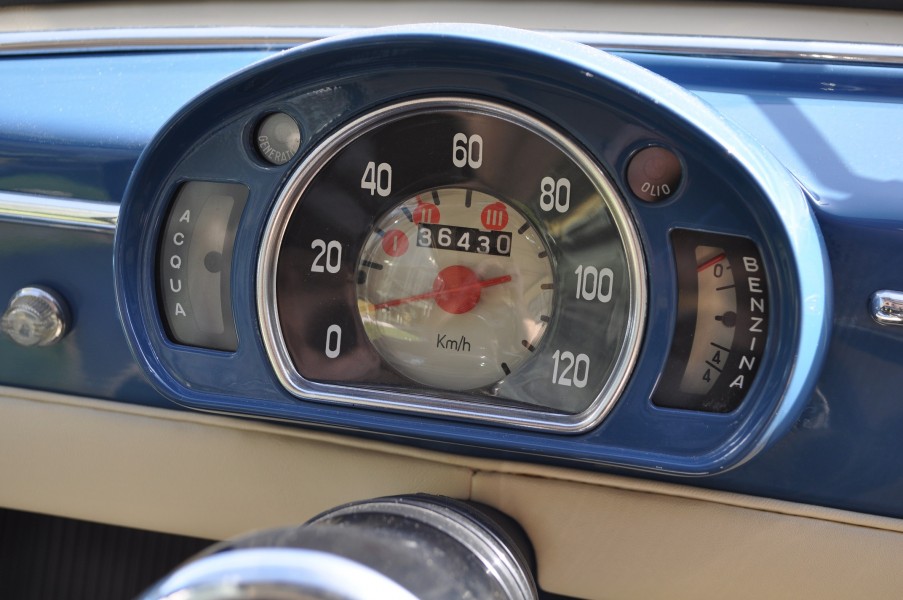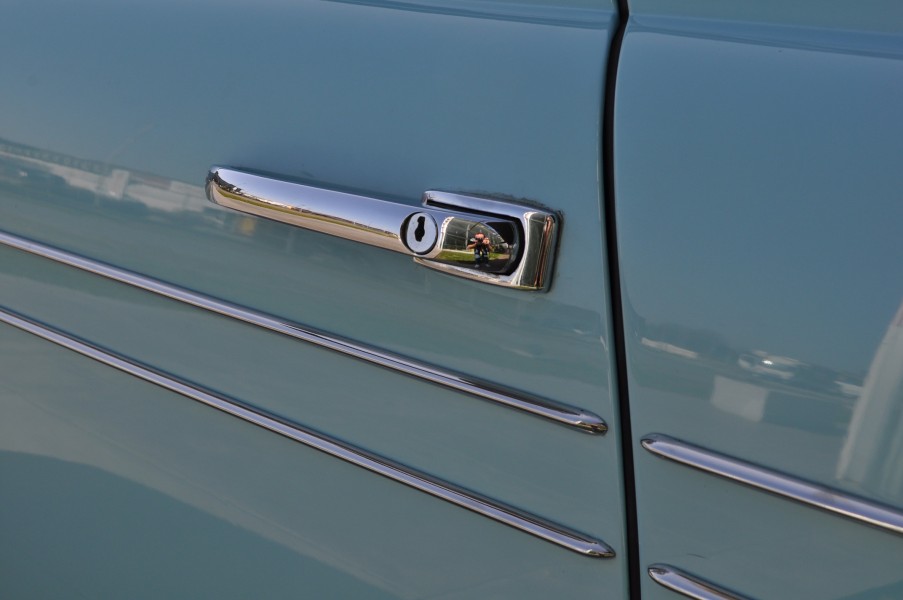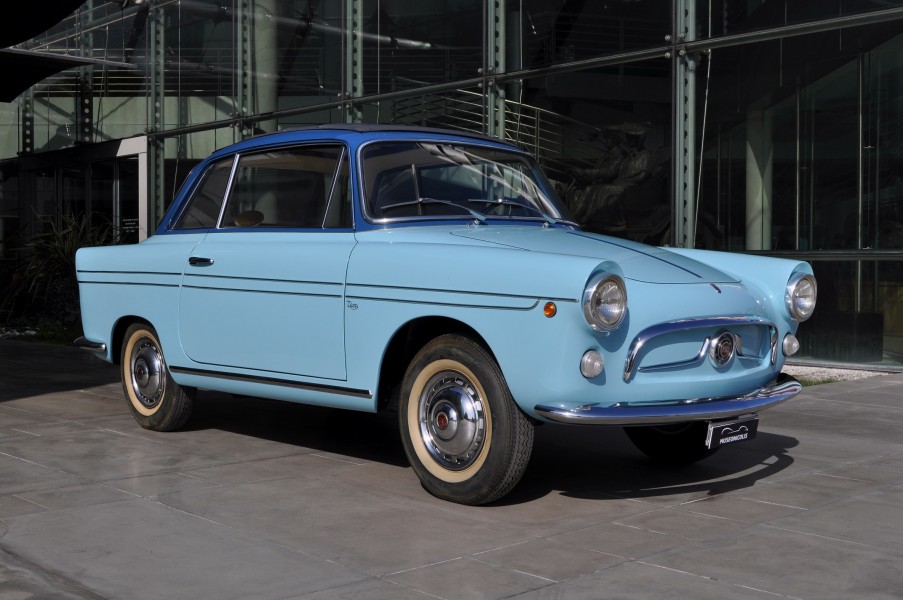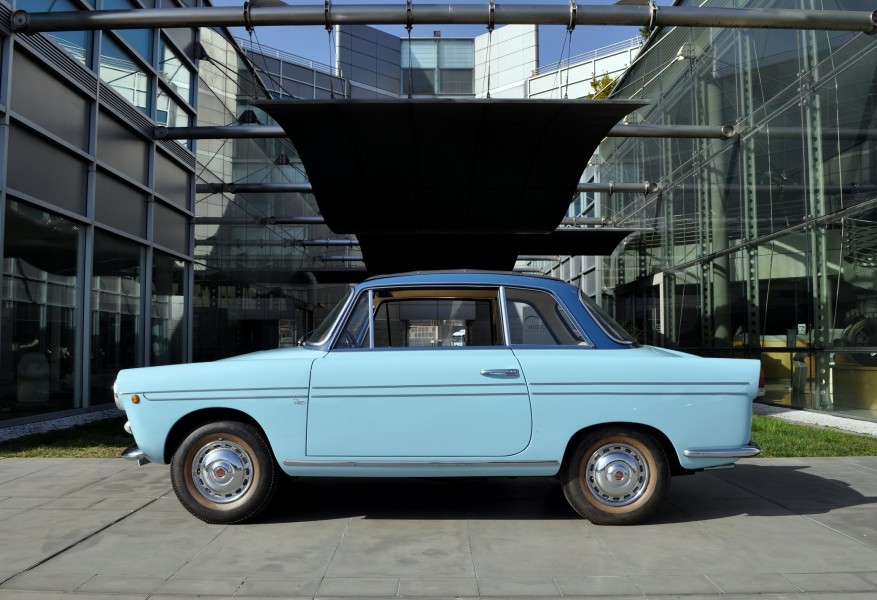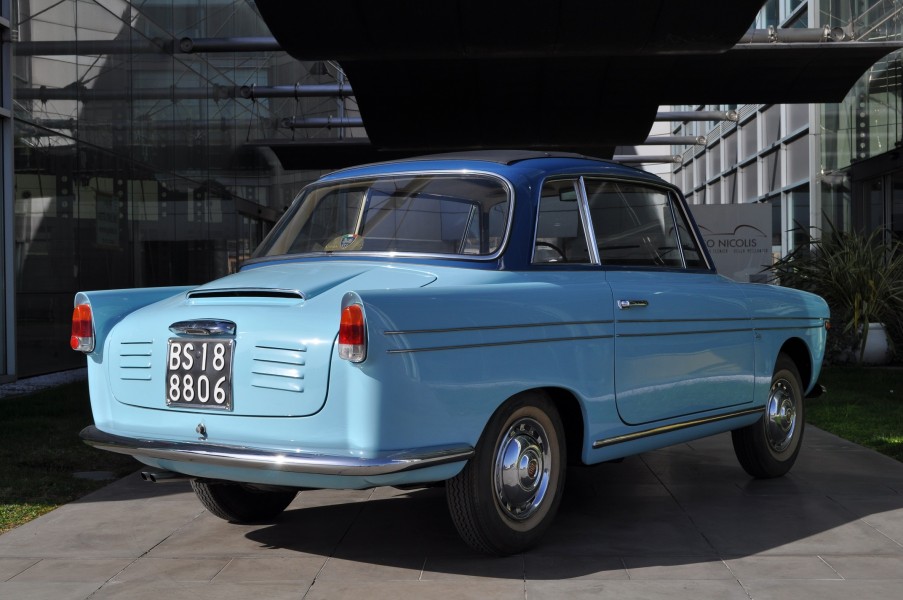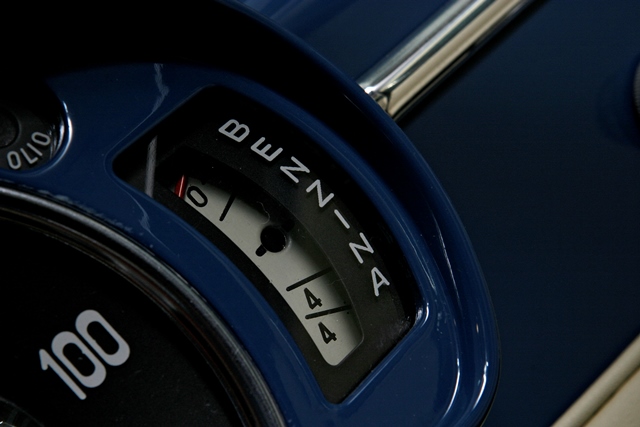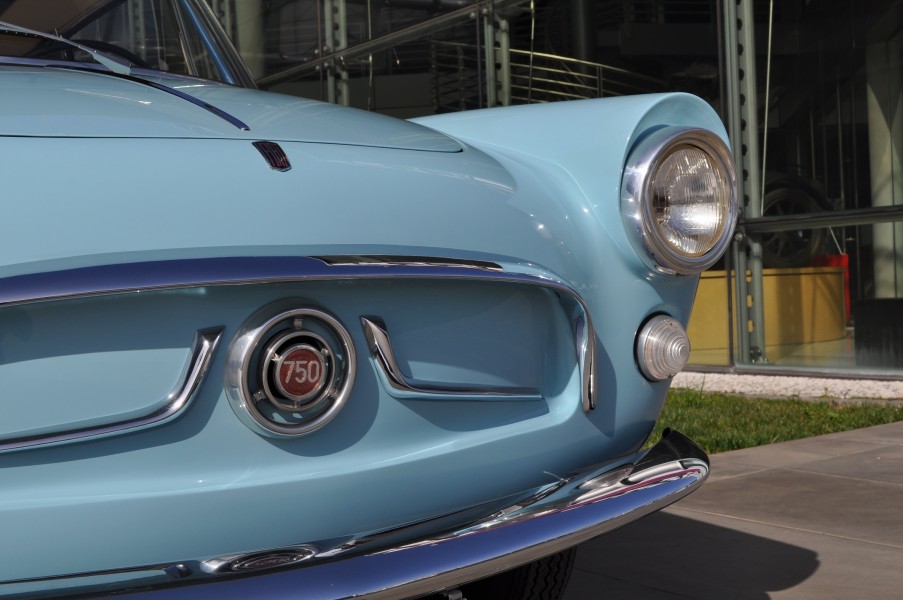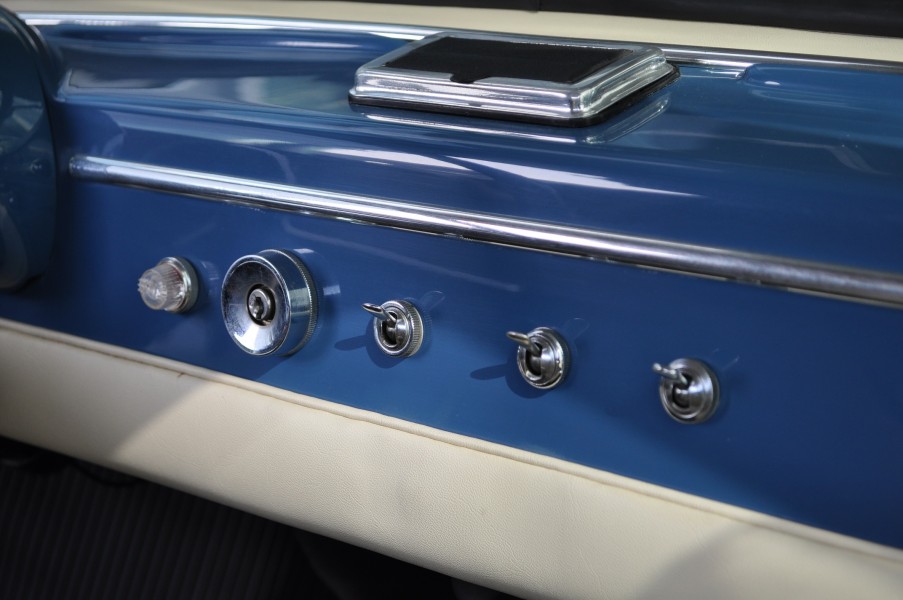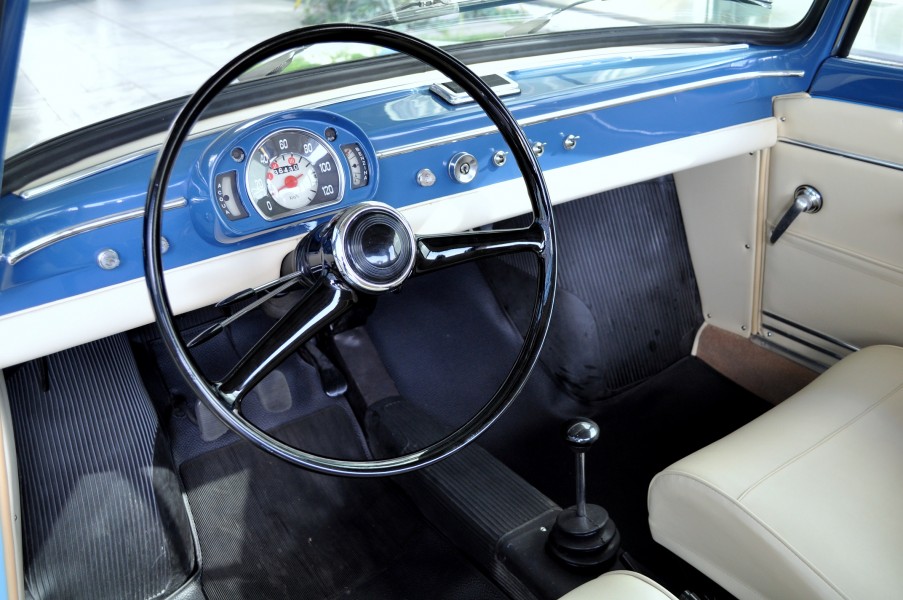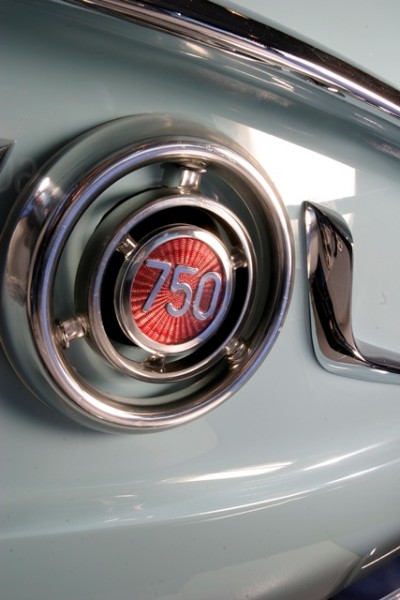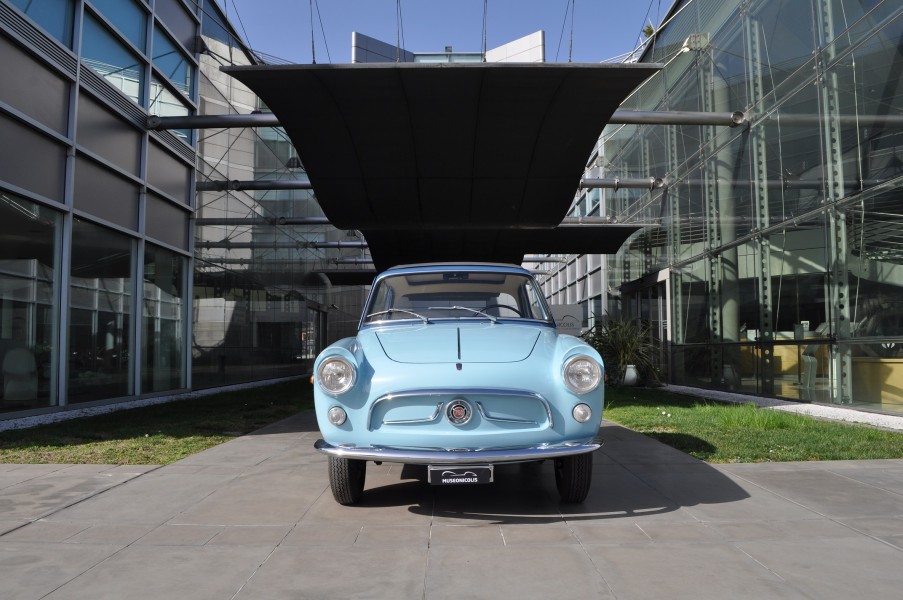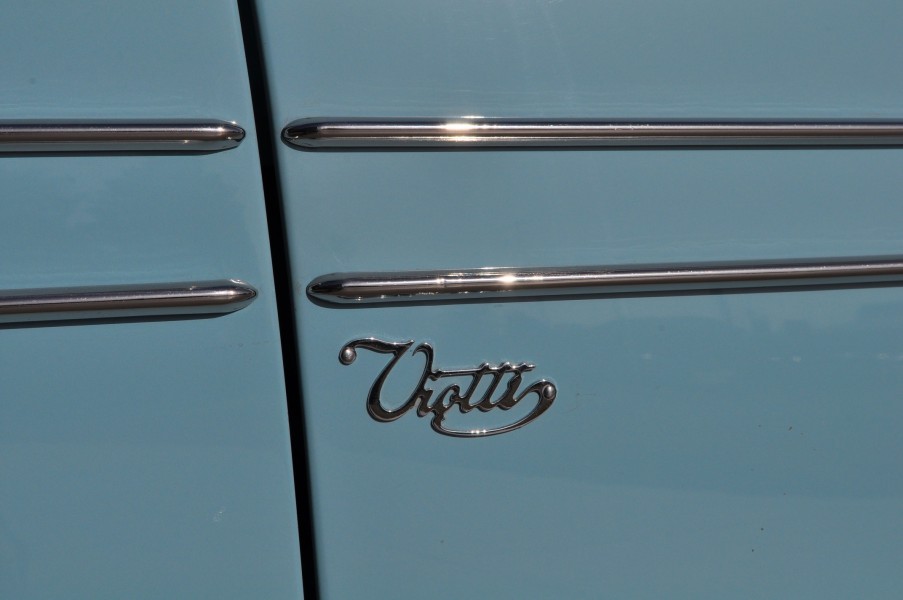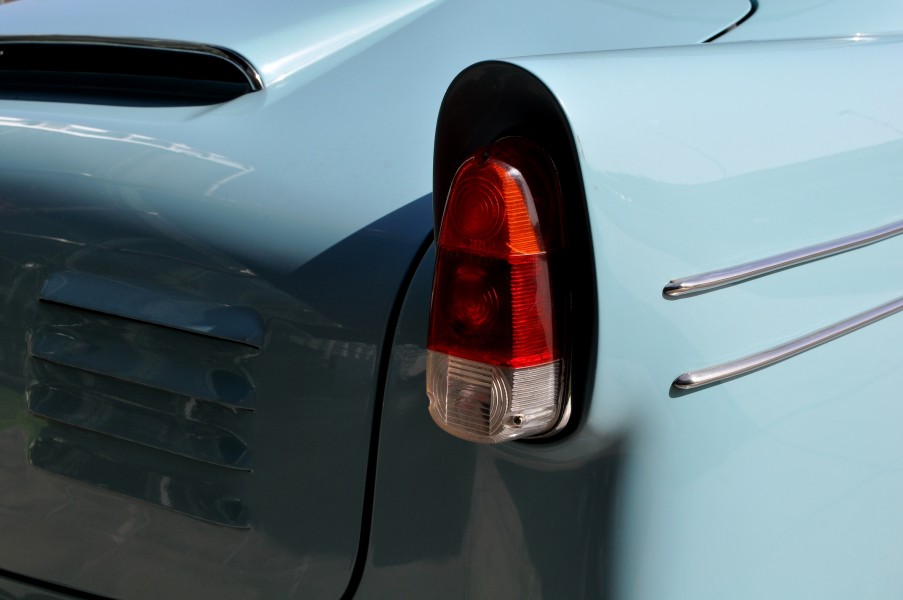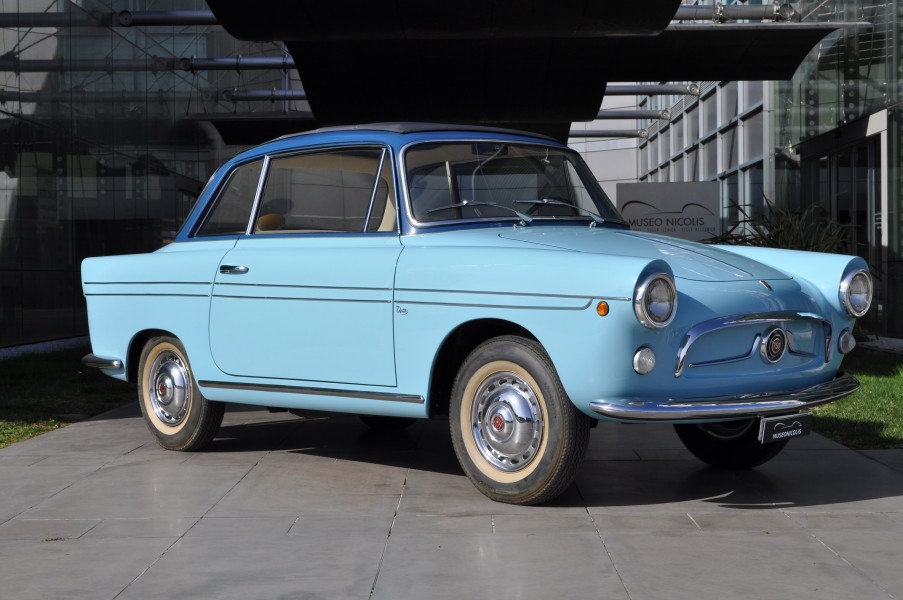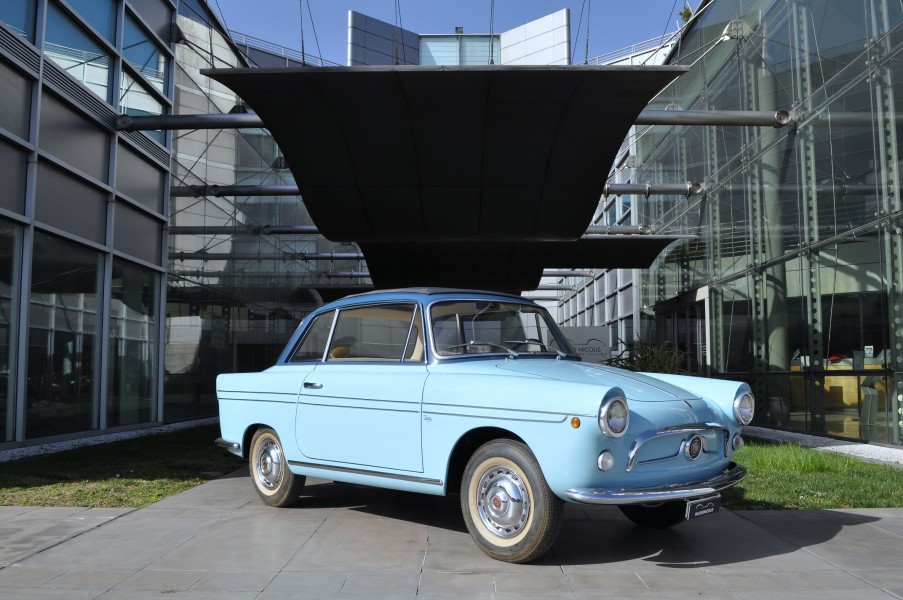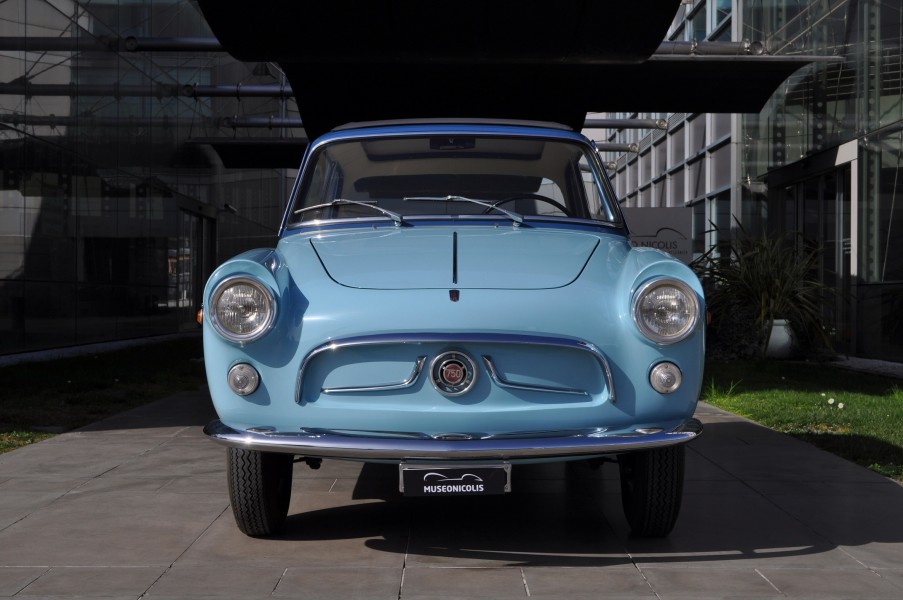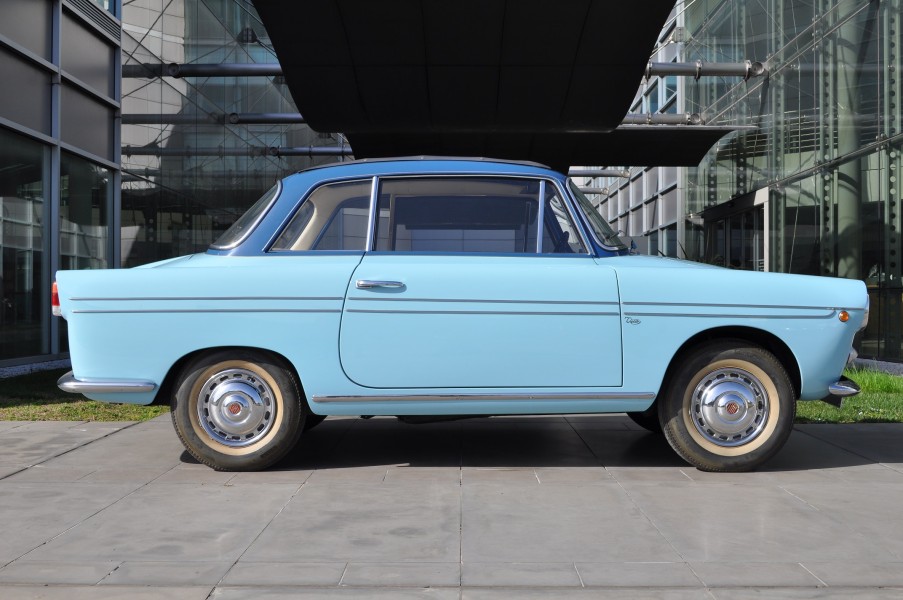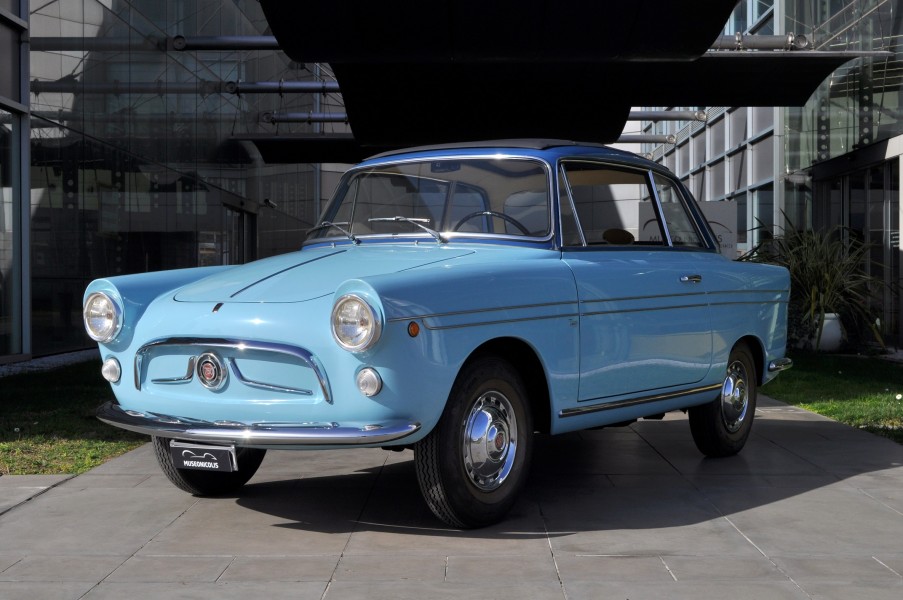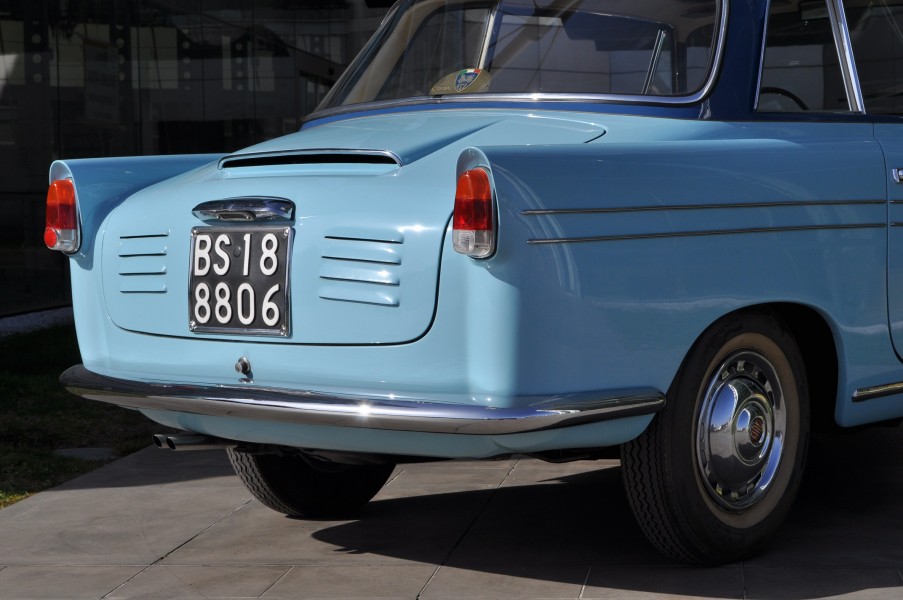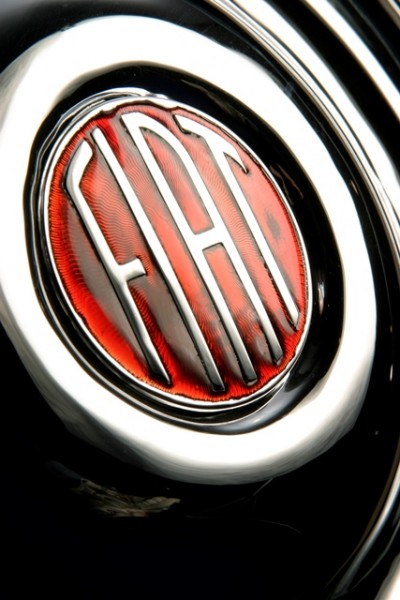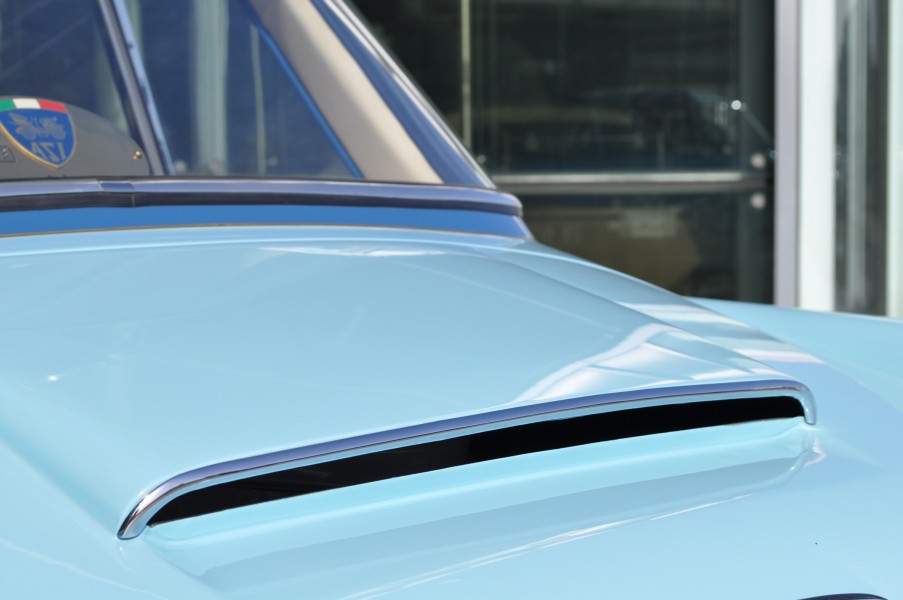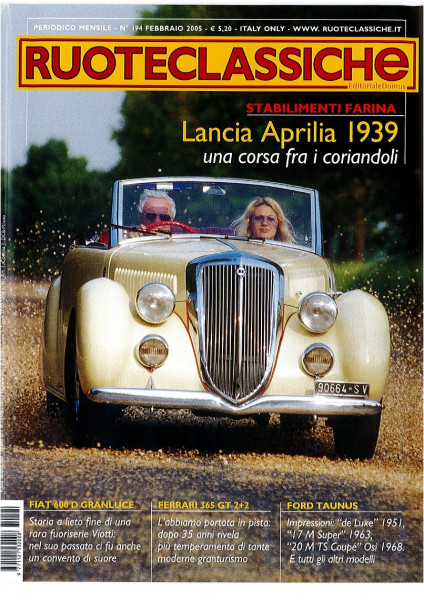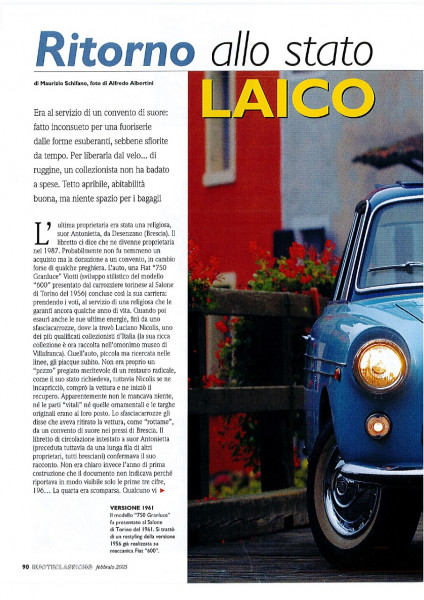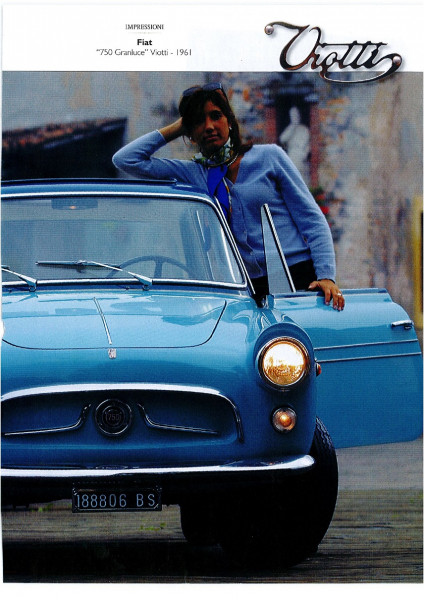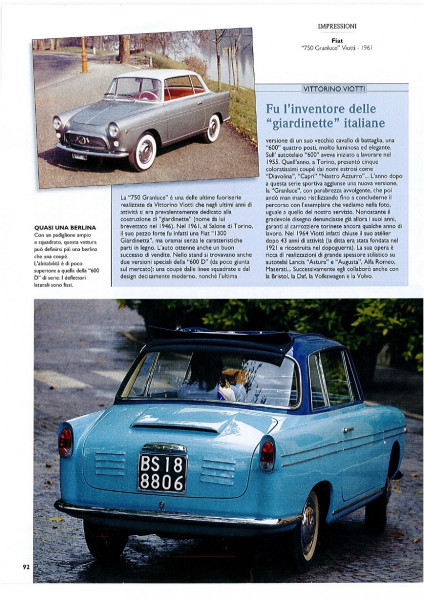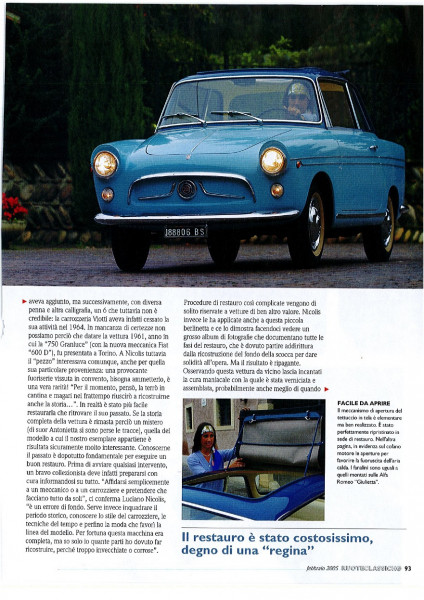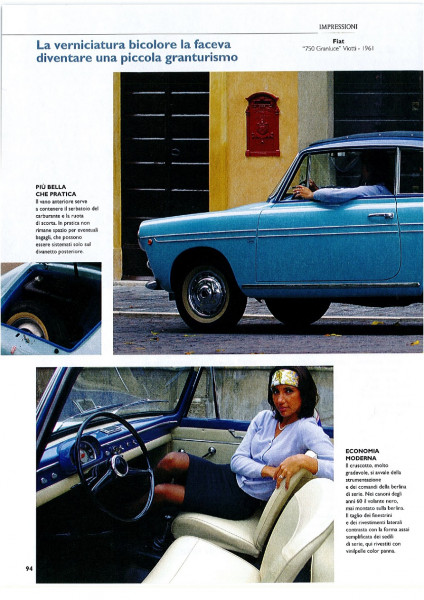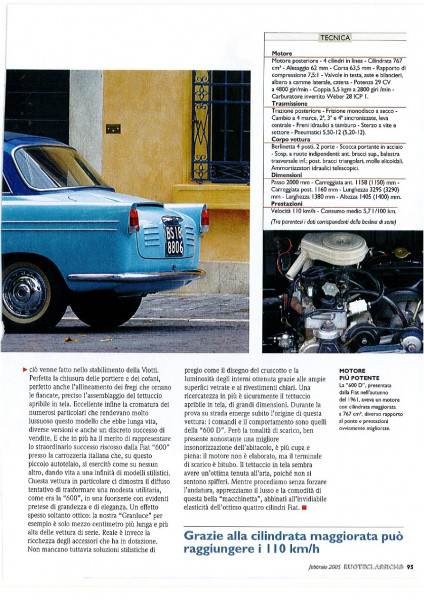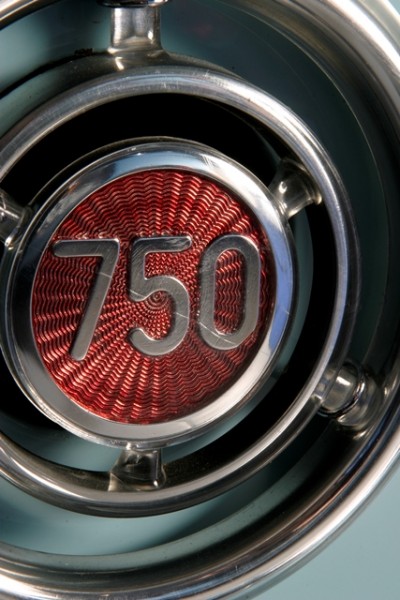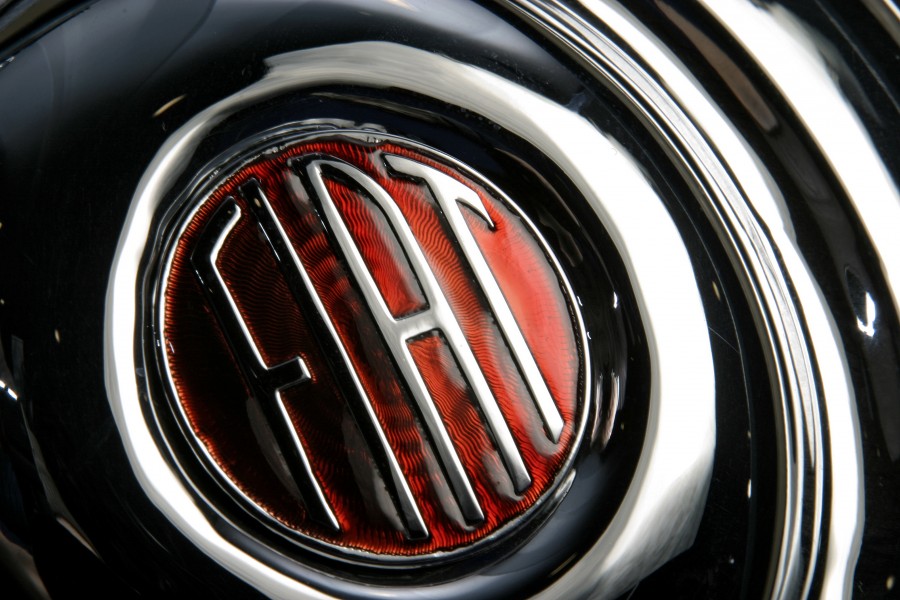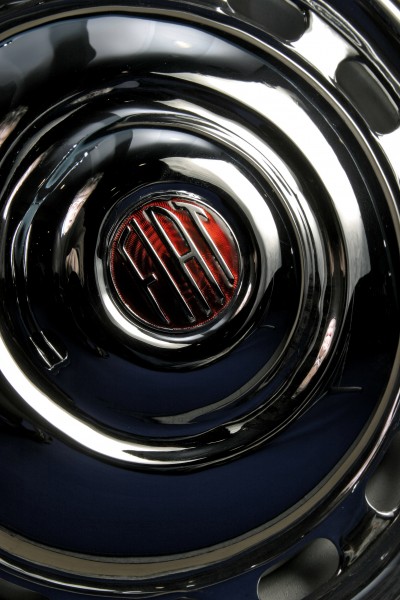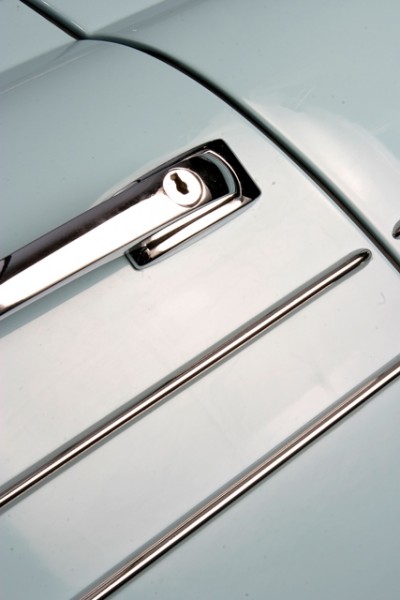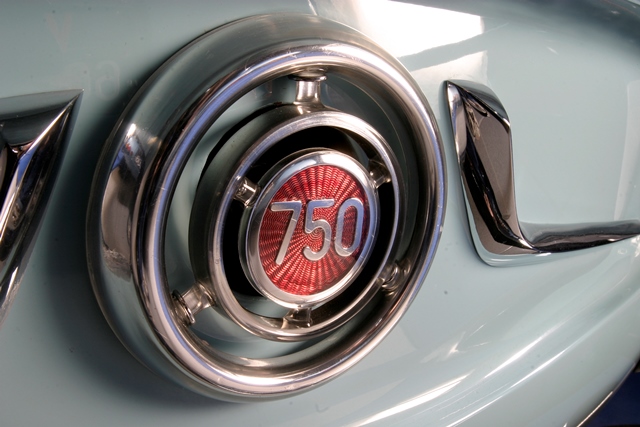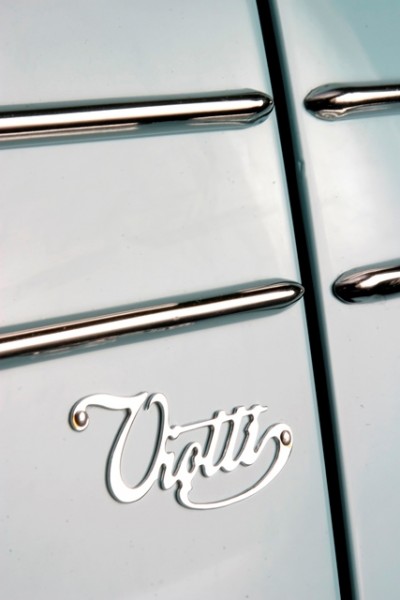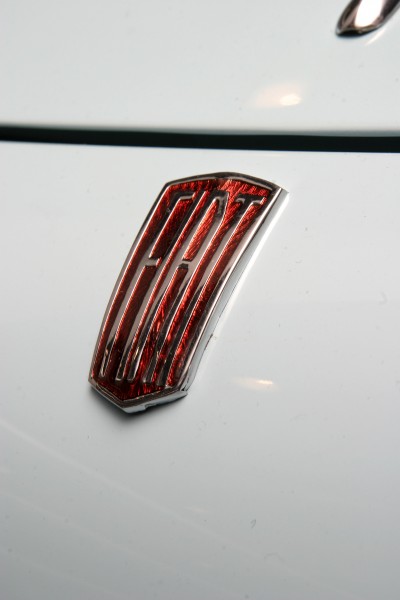Fiat, 1965, 600 D Coupé Viotti
Fiat “600 D coupé", Viotti, 1965
‘The most modified car by Italians’: borrowing an expression from a well-known advertisement, one could define the 600 in this way, symbol of the Italian dream in the years of post-war rebirth. Born from an entirely new design, with its water-cooled rear engine and comfortable seating for four, the 600, together with the Balilla and the Topolino, powered the ‘Bel Paese’. With more than 4.9 million units produced, it was the most modified and customised Italian car by all the coachbuilders and preparers who gave free rein to their creativity, launching Italian style worldwide. Officially unveiled at the Geneva Motor Show in 1955 and designed by Dante Giacosa to offer Italians a compact, affordable and efficient car, the Fiat 600 won the hearts of Italians and became a symbol of prosperity and freedom. The slogan of the time described it as ‘very modern, agile, safe’, while its presence in famous films consolidated its myth.
The 1960 D version introduced significant improvements, including an upgraded 767 cm³ engine to increase the performance gap from the 500. The model on display at the Museo Nicolis is a special version with displacement 750: an exclusive coupé with a canvas roof, signed by the famous coachbuilder Vittorino Viotti. one of the finest craftsmen of Italian car design. Active since 1921, the Viotti name is linked not only to the production of many custom-built cars, especially on Fiat and Lancia chassis, but also to the post-war spread of a new type of bodywork: the station wagon, at the time more simply called the ‘giardinetta’. The Fiat 600 perfectly represents the creative flair and Italian design of the time that helped to spread the Made in Italy label around the world.
A fascinating story: from convent to restoration - ‘The museum car was in the service of a nunnery: an unusual fact for an exuberantly shaped, albeit long since faded, custom-built car. To rid it of the veil of rust, a collector spared no expense. Sunroof, good skills, but no luggage space. The last owner had been a nun, Sister Antoinette. It was probably not even a purchase but a donation to a convent, in exchange perhaps for a few prayers... When it exhausted even its last energies, it ended up at a junkyard, where Luciano Nicolis found it'. An unusual destiny for a car with elegant lines and an exuberant character, which today lives again thanks to the passion and commitment of the Nicolis Museum.
‘Easy to open: the opening mechanism of the canvas roof is elementary but well made’.
Taken from Ruoteclassiche, by Maurizio Schifano
LINK on Fiat 600 and Cinema
2004 Shooting, Ruoteclassiche
2025 #FORUMAutomotive Milano


